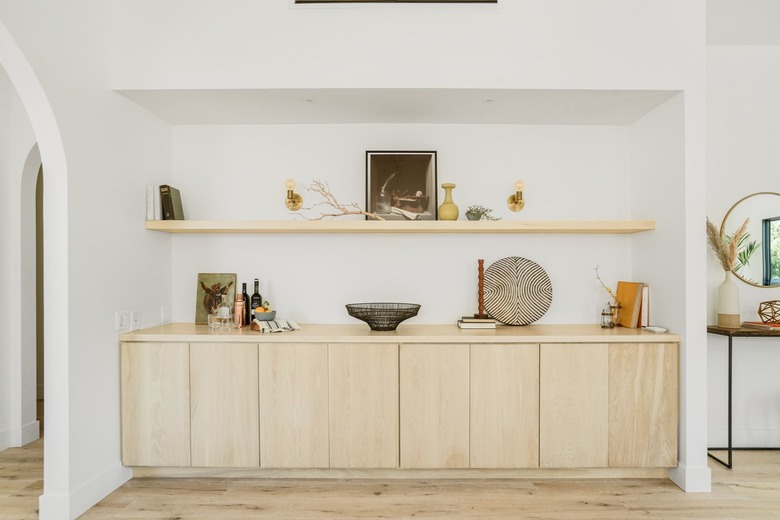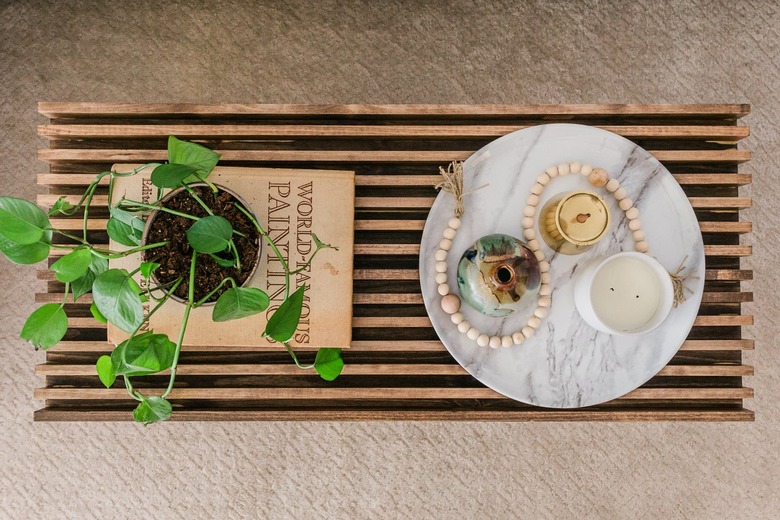Use These Expert Prop Styling Ideas To Decorate A Beautiful Home
Robin Zachary is a prop stylist pro. She comes from a long career in print magazines where she learned tips and tricks for prop styling. She has first-hand experience in how to create lovely vignettes and picture-perfect moments, which she now teaches to people across the globe through The Prop Styling Experience. We spoke with Robin on the Being Home With Hunker podcast about her top styling techniques and how we can translate these ideas from the prop world into our personal spaces.
"Styling is all about a curation of sorts," says Zachary. "And [it's about] establishing some kind of world. So, I would say that styling your home can be that ongoing curation project where, you know, it's a reflection of who you are and the things you love."
Zachary goes on to say that our collections from family or from our travels shouldn't be static. She recommends that when we are styling a bookshelf or entryway table, it should be ever-changing.
Here she shares four prop styling design principles and techniques that we can use when decorating and designing our own interiors.
Listen to the Full Conversation on the Being Home With Hunker Podcast
1. Hierarchy
"Number one is that there is a hierarchy to how you arrange things," says Zachary. "So tall things will go to the back medium things in between and small things in the front."
Zachary says that we want to have items and objects on different levels, and to use the surrounding space. So, the wall and the surface are thought as a continuum. Even with bookshelves. She shares, "It's not just things standing on a shelf. You also have the back wall of your bookshelf. You can put things back there, like a plate or a picture." She goes on to suggest that we think of things in terms of shapes. "So, when you think of shapes, then you sort of think graphically and you can kind of use this like overlapping technique where you look at how things intersect with each other." Such as overlapping a circle or oval platter with a square board or picture frame.
2. Stacking
Zachary suggests a stacking technique which involve using blocks, boxes, and pieces of wood to create levels and different heights. (Try this super easy cube riser DIY by DIY expert and content creator Trisha Sprouse.)
And use what you have, like magazine or books. Zachary says, "You can stack your books sideways. And that becomes like a riser as well." Put a figurine or small bowl on top of the stacked books.
3. Asymmetry
This technique is about not evenly lining everything up, putting things on different planes, to one side or another.
Zachary says that "using an odd number of things like threes and fives are easier to use and to stagger than just two of something." Putting something like candlesticks with one a little behind the other makes it more interesting to the eyes.
4. Sectioning
An example of sectioning off a space is "like taking a wooden board or a tray [to] segment an area." So, if you've got a big coffee table, you can use a tray to hold items that are sectioned off from the rest of the table.
Zachary suggests using pieces of marble slab, a circle or disc, or a placemat.
To hear more from Robin Zachary, listen to her on the Being Home With Hunker podcast or visit her website at ThePropStylingExperience.com.











